

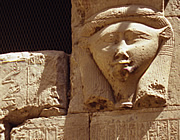
The impressive Temple of Hathor at Dendera is very well-preserved, atmospherically set on the edge of the desert some way north of Luxor.
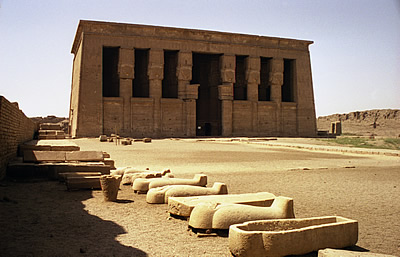
Visiting Dendera in 2000 we began from Luxor in convoy with an armed guard, the Egyptians still being very sensitive after the attacks at the Temple of Hatshepsut.
Travelling along the Nile and a canal for some way it was an experience to see local village life along the river bank: little girls in "western" dress running alongside the convoy laughing and waving, men and boys bouncing along on donkeys laden with vegetation, black-clad women striding along with loads on their heads - bundles of cloth, stacks of egg boxes - against a backdrop of reed-fenced enclosures and mud brick buildings.
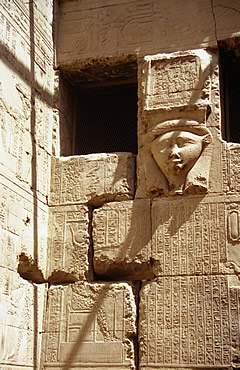
At Quena most vehicles peeled off for Hurghada on the coast and we were left alone in our air-conditioned mini-bus with our guide and one other vehicle to cross the Nile to Dendera. When we arrived we were the only visitors with our guide - we couldn't believe our luck!
The Temple of Hathor at Dendera is well-preserved and a most impressive temple site to visit, atmospherically set on the edge of the desert.
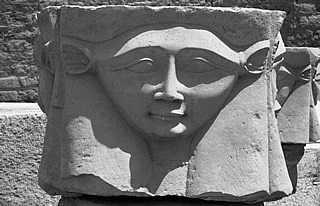
Hathor, the city goddess, has the face of a cow with distinctive ears and she can be seen adorning the temple at the tops of columns, arches, and most obviously on the facade of the temple. Although a temple would have stood at this site for many centuries the current buildings date from the second century B.C., being Ptolemaic in origin, with decorations continuing into the Roman period.
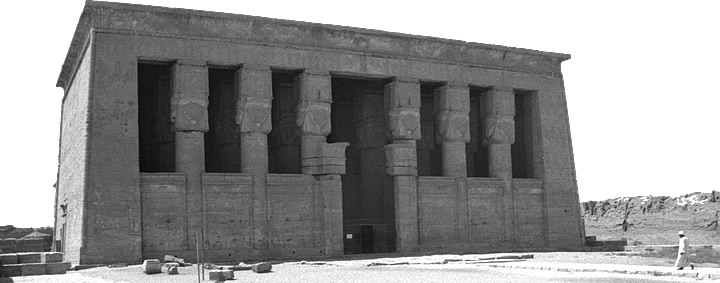
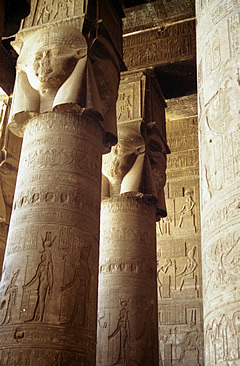
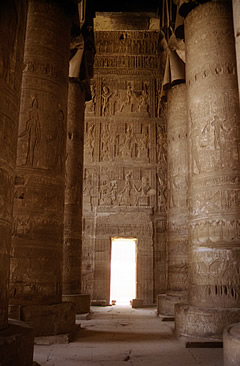
The central doorway of the facade leads to a huge hypostyle hall which is amazingly well-preserved. One of the best things about the temple is that the roof and ceilings are intact, albeit blackened by the smoke of countless Roman fires.
Regrettably many of the beautiful cow goddess faces have been hacked out by Christians but the hall is still a most impressive spectacle, every surface covered in carvings.
This huge hypostyle hall leads on to smaller halls and an inner sanctuary.
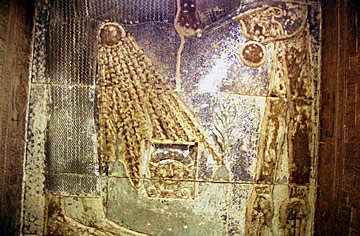
Colour is still visible in some paintings on the ceilings of astronomical subjects including winged scarabs and sun disks and a magnificent depiction of Nut, the sky goddess, who swallows the sun at the end of each day. At each dawn the sun is then reborn.
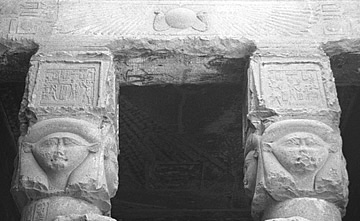
Throughout the halls numerous brown bats with translucent wings roost in the doorways.
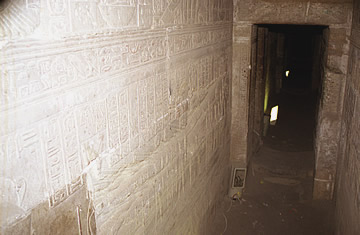
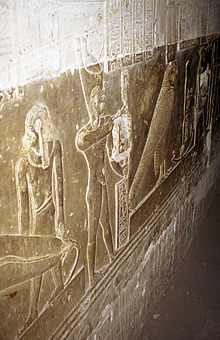
At the far end is the entrance to the crypts. I can't imagine how they accommodate large numbers of visitors but being on our own we were privileged to be able to visit the underground rooms, climbing down a rickety stair and through a narrow entrance to a passageway with wonderful inscriptions and decorations on the walls, including a beautiful Horus, the "husband" of Hathor. One of the annual festivals held in ancient times at Dendera was the journey of Hathor, in the form of a statue, up the Nile to visit Horus at the Temple of Edfu.
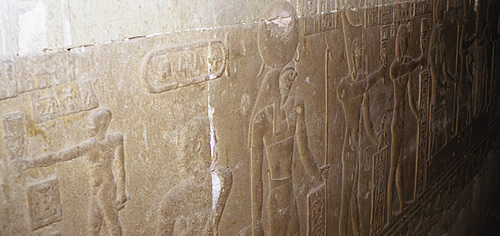
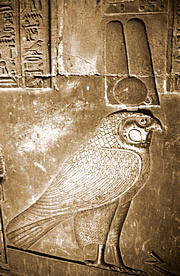
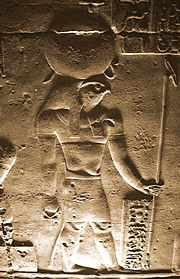
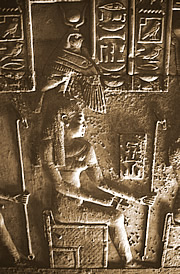
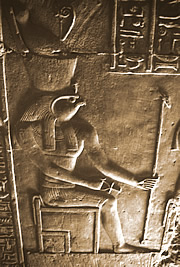
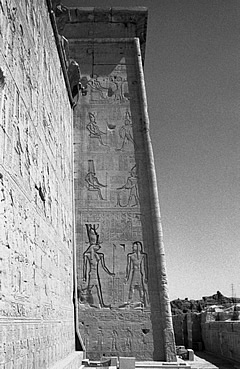
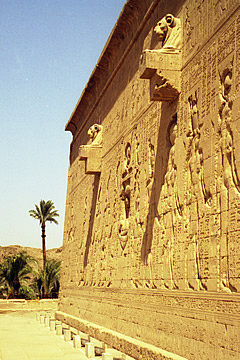
Another important annual festival involved carrying Hathor to the roof of the temple to absorb the sun's rays. We climbed the ceremonial staircase on one side of the temple which is decorated with images of the goddess being carried up to the roof, descending by a staircase on the opposite side which has images of the goddess being carried down.
On the roof there are chapels and the ceiling of one room has a copy of a marvellous unique ancient zodiac ( the original is in the Louvre).
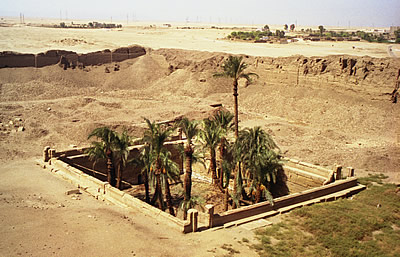
From the roof the surroundings of the temple can be seen, including "Cleopatra's Pool", actually the Sacred Lake, together with a marvellous view over the surrounding landscape.
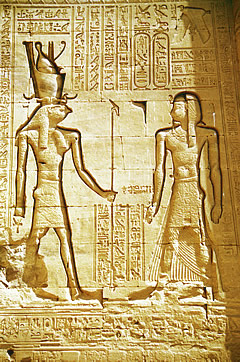
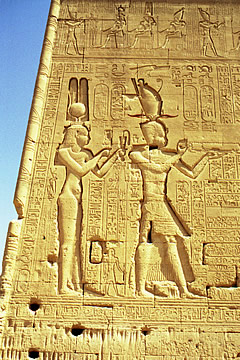
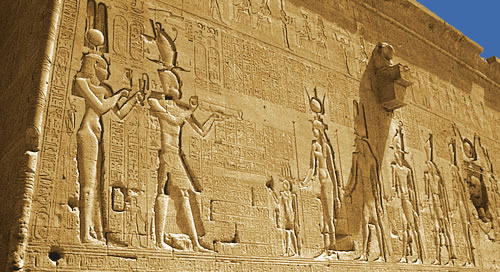
The outer faces of the temple walls bear some wonderful carved figures, including Cleopatra with her son by Julius Caesar called Caesarion on the south wall. Here can also be found the small Temple of Isis.
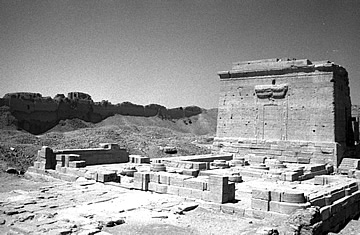
The complex has the remains of three Birth Houses (one is completely in ruins). These were important in establishing the pharaoh's relationship with the god Horus, and thus his divinity and right to rule, by a ritual association with the god's birth celebrated in the Birth House. One of the Birth Houses at Dendera shows Ptolemy born of the gods, a descendant of Horus, and therefore a true ruler of Egypt.
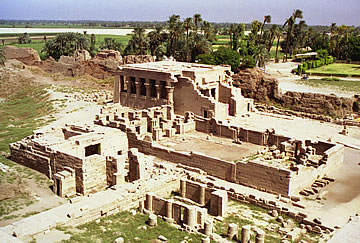
Dendera is magnificent, one of my favourite Egyptian sites and well worth the effort of travelling to see it.